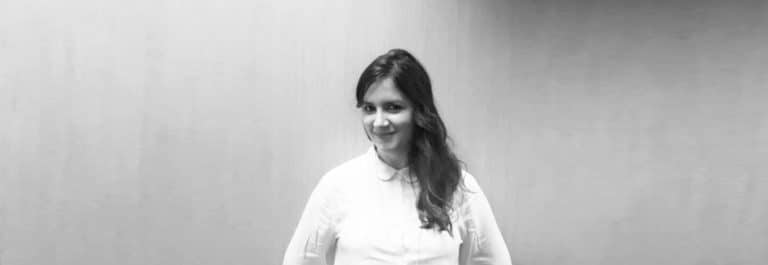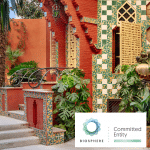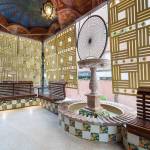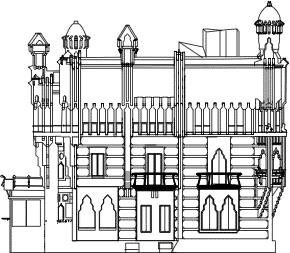Who is Marta Antuñano? An interview

Marta Antuñano Reñé (32). Although I’ve lived in Barcelona since I was little, I remain very attached to Lleida, capital of the Ponent, which is where my family comes from.
All my teachers back in school considered me a catacaldos (a term used to describe someone who flits from one thing to another) because of my natural instinct to try everything from drawing and painting to violin and choral music. I suppose this interest in the arts is what led me to enroll in a university architecture program and subsequently opt to complete a degree in art history. Building on that experience, I earned a masters degree in cultural heritage management and completed a post-graduate program in the restoration of architectural heritage. Now I’m working on a doctoral degree in cultural and heritage management. My thesis (which is currently on stand-by) focuses on house museums.
You presently work as a museologist at Casa Vicens. We love the word museologist. Can you fill us in on what your daily work entails?
The professional profile and functions of a museologist have a slight air of mystery and actually cover a number of tasks. However, generally speaking, a museologist is someone employed by a museum who has an academic background in the social or natural sciences or the technical aspects of museology as well as additional training in cultural management geared specifically to the needs of the institution he or she works for.
My tasks and functions at Casa Vicens include studying the building from a heritage perspective (activities closely aligned with the classic duties of a collection curator), monitoring its restoration, taking care of the concept and design aspects of permanent exhibition spaces, and determining the types of tours and public access we will be offering here.
Having a staff member with your type of qualifications is a sign of the seriousness and historical and scientific rigor with which the Casa Vicens project is being pursued. How and when did you become involved?
Yes, from the very beginning of the project the organizers anticipated bringing someone with my type of profile on board. In truth, it was a combination of destiny and being in the right place at the right time that led to my full-time involvement in this marvelous project since August 2014.
What was the most exciting discovery you have made during your research on Casa Vicens?
From my perspective, two things in particular stand out. The first, which is related to the historical facts we have been able to establish to date about the house and Manuel Vicens, was the discovery of a document stating how much Vicens owed for a lot of tiles he had ordered from the Pujol y Baucis ceramic factory. This and other documental sources have allowed us to refute an erroneous but widely accepted notion that the Vicens family owned a brick and tile factory.
The other really interesting thing, which happened in the course of the restoration process, was confirming our initial hypothesis about decorative elements in the smoking room on the basis of written documentation. Our hunch that the surfaces of the entire space had originally been polychromed turned out to be correct. Once the house is open to the public, we’ll be able to appreciate its decorative splendor in all its glory.
What has been the most difficult aspect of the entire restoration process?
While it wasn’t a difficulty per se, we did spend a lot of effort on defining our approach and focus. Given that we were working with the last Gaudí Human Heritage Site to be made publically accessible, we ran a risk of duplicating material about Gaudí’s work and life covered elsewhere or simply drawing comparisons between this building and other examples of the architect’s work. We were interested in defining what Casa Vicens should be from a fresh and unbiased perspective.
What are your hopes for Casa Vicens going forward?
I’d like it to be a vital project, a cultural entity linked to Gaudí and the sociocultural context in which he lived and worked that stands out for its contemporary outlook. A heritage center with its own identity and personality that the people of Barcelona will talk about . . . in other words, I hope that everything we’ve envisioned and planned for so long becomes a viable reality.
This has been a big year for you in terms of professional and personal projects, hasn’t it?
The is no doubt that 2017 is a very special year for me on both fronts. On the one hand, Casa Vicens will open its doors to the public this fall. But a few months before that takes place I’ll be the proud mom of a baby due to arrive at the end of June and probably very close to June 25, the day Gaudí was born. Another case of destiny, I suppose!


